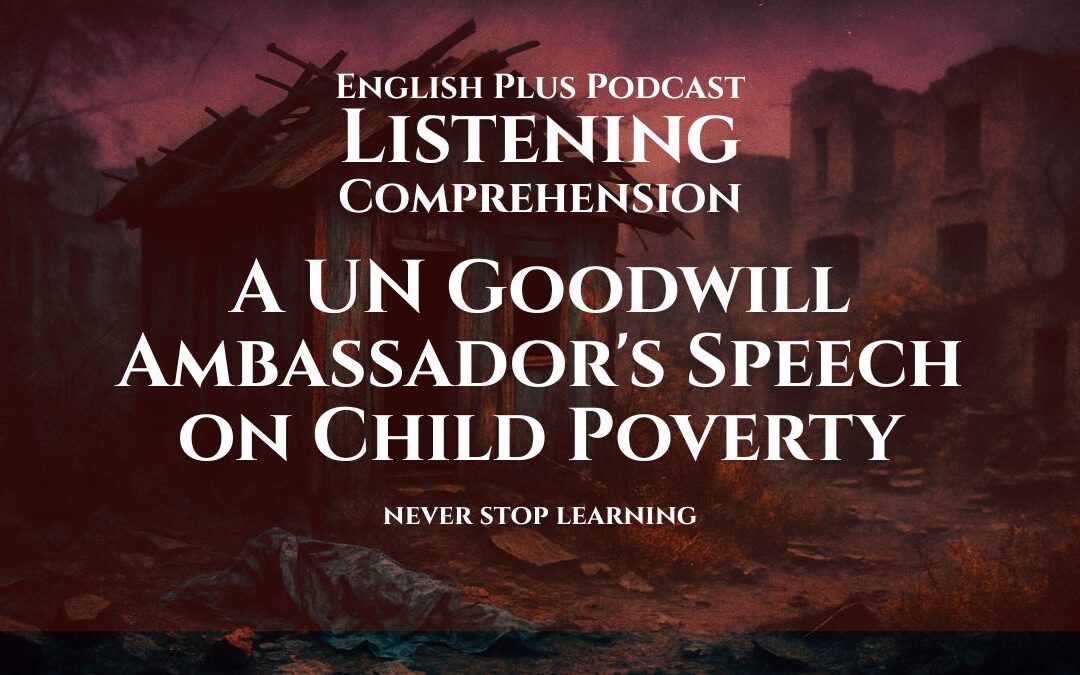English is filled with rich and expressive words that allow us to convey nuanced emotions. One such word is “lachrymose,” a term that isn’t used every day but can add depth and precision to your language. In this article, we’ll delve into the meaning of “lachrymose,” explore when it’s appropriate to use it, and discuss when it might be better to choose a different word.
What Does “Lachrymose” Mean?
The word “lachrymose” originates from the Latin word lachryma, meaning “tear.” It is an adjective that describes someone who is tearful or inclined to weep, or something that causes tears or sadness. Essentially, “lachrymose” refers to a state of being sorrowful or emotionally moved to tears.
For example:
- “After watching the tragic ending of the movie, she became quite lachrymose.”
- “His lachrymose demeanor at the funeral was understandable given the circumstances.”
In both examples, “lachrymose” is used to describe a person or situation characterized by tears or deep emotion.
When Is It Appropriate to Use “Lachrymose”?
“Lachrymose” is most appropriate in situations where you want to convey a sense of deep sorrow or emotional vulnerability. It is often used in more formal or literary contexts, as the word itself carries a certain elegance that might not fit casual conversations.
Here are some examples of appropriate usage:
- Describing a Character in Literature:
- “The author’s depiction of the lachrymose widow added to the novel’s emotional depth.”
- In Artistic Criticism:
- “The play’s lachrymose tone may resonate with those who have experienced similar personal loss.”
- In Personal Reflection:
- “He became lachrymose as he reminisced about the happy memories of his childhood.”
In these examples, “lachrymose” helps convey a level of emotional intensity that simpler words like “sad” or “tearful” might not fully capture.
When Is It Not Appropriate to Use “Lachrymose”?
While “lachrymose” is a powerful word, it isn’t always the right choice. There are situations where its use might seem overly dramatic or out of place. Here are some instances where it’s best to avoid using the word:
- In Casual Conversation:
- In everyday conversations, using “lachrymose” can come across as pretentious or overly formal. For example, saying, “My friend was lachrymose after failing the test,” might sound out of place. Instead, simply saying, “My friend was really upset,” would be more natural.
- When Simplicity is Key:
- In situations where clarity and simplicity are more important than stylistic flair, it’s better to choose a more straightforward word. For example, in a professional setting, it might be more effective to describe someone as “emotional” or “tearful” rather than “lachrymose.”
- When Addressing a Broader Audience:
- If you’re speaking to an audience that may not be familiar with the word, using “lachrymose” might lead to confusion. In such cases, it’s better to use a more common term to ensure that your message is understood.
Common Mistakes to Avoid
One common mistake with “lachrymose” is using it in contexts where it might seem too literary or disconnected from the tone of the conversation. It’s also important to avoid using it in a way that trivializes serious emotions. For instance, describing a minor inconvenience as “lachrymose” can come across as insincere or exaggerated.
Additionally, be mindful of the audience. If you’re unsure whether the word will be understood, it might be best to choose a synonym like “tearful” or “melancholy” that conveys a similar meaning but with broader familiarity.
The word “lachrymose” is a valuable addition to your vocabulary when you need to express deep sorrow or emotional sensitivity with precision. Its formal and somewhat literary tone makes it ideal for artistic, reflective, or solemn contexts. However, in casual or straightforward communication, it’s often better to opt for simpler language.
By understanding the meaning and nuances of “lachrymose,” you can use it effectively in the right situations, enhancing your expression without overcomplicating your message. Remember, like any specialized vocabulary, knowing when not to use a word is just as important as knowing when to use it.
Whether you’re reading literature, writing creatively, or reflecting on a poignant moment, “lachrymose” can add richness to your language when used thoughtfully.
Expand Your Vocabulary
In this section, we’ll explore 10 important words and expressions mentioned in the article. Understanding these terms will help you better grasp the content and enhance your everyday English usage.
- Lachrymose (adj.)
Meaning: Tearful or prone to weeping; causing tears or sadness.
Example in Context: The word “lachrymose” describes someone who is emotionally moved to tears, often used in formal or literary contexts.
Everyday Use: “The lachrymose atmosphere at the memorial service reflected the deep sorrow felt by all.” - Nuanced (adj.)
Meaning: Characterized by subtle or slight differences in meaning, expression, or tone.
Example in Context: The article mentions how the word “lachrymose” adds a nuanced understanding of deep sorrow beyond simple sadness.
Everyday Use: “Her performance was nuanced, with subtle expressions that conveyed complex emotions.” - Poignant (adj.)
Meaning: Evoking a keen sense of sadness or regret; emotionally moving.
Example in Context: “Lachrymose” is often used in poignant situations where deep emotions are stirred.
Everyday Use: “The poignant letter brought tears to her eyes as she read about her friend’s struggles.” - Formality (n.)
Meaning: The quality or condition of being formal; adherence to established rules or customs, especially in language or behavior.
Example in Context: “Lachrymose” is appropriate in formal contexts due to its elegant tone.
Everyday Use: “The formality of the event required everyone to dress in their finest attire.” - Melancholy (n. or adj.)
Meaning: A deep, pensive, and long-lasting sadness.
Example in Context: As an alternative to “lachrymose,” “melancholy” can also describe a sorrowful mood.
Everyday Use: “She felt a wave of melancholy wash over her as she walked through the empty house.” - Trivialize (v.)
Meaning: To make something seem less important or serious than it really is.
Example in Context: The article cautions against using “lachrymose” in a way that might trivialize serious emotions.
Everyday Use: “He didn’t mean to trivialize her concerns, but his casual response made her feel unheard.” - Pretentious (adj.)
Meaning: Attempting to impress by affecting greater importance, talent, or culture than is actually possessed.
Example in Context: Using “lachrymose” in casual conversation might seem pretentious or overly formal.
Everyday Use: “Her pretentious attitude at the party turned many people off.” - Demeanor (n.)
Meaning: The outward behavior or bearing of a person.
Example in Context: “Lachrymose demeanor” refers to someone’s outward display of sadness or tearfulness.
Everyday Use: “His calm demeanor helped reassure everyone during the crisis.” - Resonate (v.)
Meaning: To evoke a feeling of shared emotion or belief; to have a lasting impact.
Example in Context: The article mentions how a “lachrymose” tone in art can resonate with those who have experienced loss.
Everyday Use: “The song resonated with many people because of its heartfelt lyrics.” - Elegance (n.)
Meaning: The quality of being graceful and stylish in appearance or manner; sophistication.
Example in Context: “Lachrymose” carries a certain elegance that suits formal or literary contexts.
Everyday Use: “Her elegance on the dance floor captured everyone’s attention.”
By incorporating these words and expressions into your daily conversations, you’ll not only enhance your vocabulary but also improve your ability to communicate effectively and with greater nuance.
Let’s Talk
Now that you’ve learned about the word “lachrymose,” let’s dive deeper with some thought-provoking questions. These questions are designed to get you thinking about the topic, and you can share your thoughts in the comments or discuss them with friends and family.
- Have you ever felt “lachrymose” in a situation that caught you by surprise? How did you handle your emotions, and what did you learn from the experience?
- Can you think of a moment in literature or film where a character’s “lachrymose” demeanor deeply impacted you? How did the portrayal of their emotions enhance the story?
- Do you think that using a word like “lachrymose” in everyday conversation can enrich communication, or does it risk coming across as pretentious? Why or why not?
- In what types of situations do you think it’s important to avoid trivializing emotions? How can we be more mindful of the words we choose when discussing sensitive topics?
- How do you feel about the balance between simplicity and elegance in language? When is it better to use more nuanced vocabulary, and when is it better to keep things simple?
- Have you encountered a time when using a more formal word like “lachrymose” helped you express yourself more precisely? How did the choice of words change the conversation?
Reflecting on these questions can help deepen your understanding of the word “lachrymose” and its role in effective communication. Feel free to share your experiences or thoughts, and let’s keep the conversation going!











0 Comments